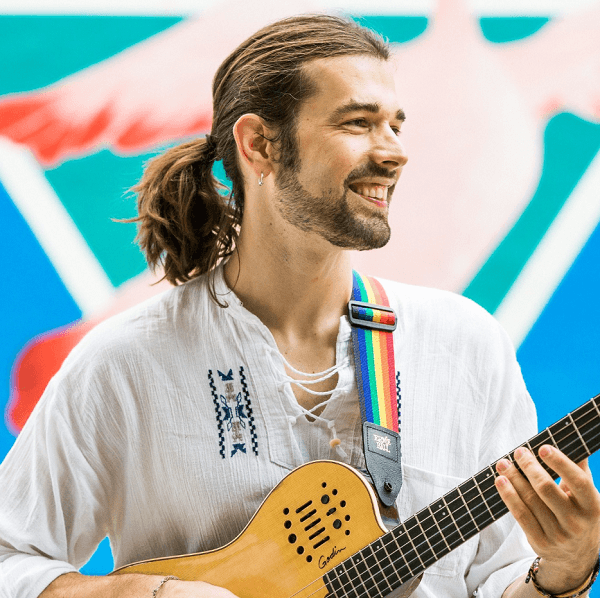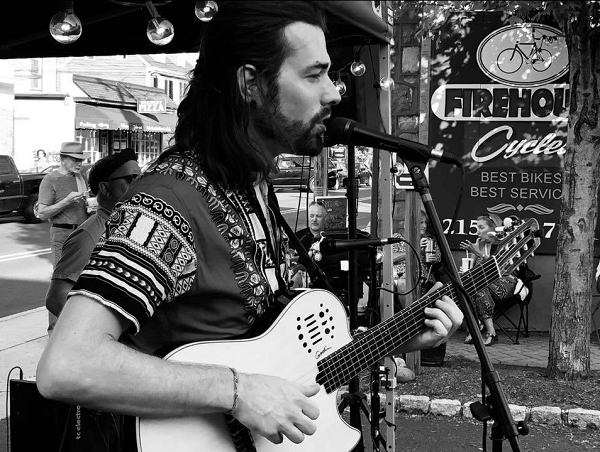Undoubtedly, Latin music continues to enslave hearts around the world and the protagonist of this story is a reliable proof of it. It has been such a great honor for us to have known the story of Swedish professional dancer Molly Hagman, who has shared with us the most important facts about her career and how she has reached the point she is at today.

How Molly became interested in dancing in her home country
Nice and jovial Molly was describing in detail everything she has done in her career, thus answering most questions we had for her. She began by telling us that her dance studies began when she was still very young. Being only 15 years old, her best friend at the time convinced her to enroll in the Malmoe Dance Academy in the Swedish city of Malmö, to learn from instructors who introduced her to genres such as jazz, hip hop, contemporary music and ballet.
Two years later, when she was sufficiently prepared, she began experimenting with salsa and auditioning for women’s dance teams, one of them being the group Bellasitas, Molly and Maddy being the first two original members. Once the team was complete, they began to perform in congresses throughout Europe such as the Berlin Salsa Festival, the Hamburg Salsa Festival, the Copenhagen Salsa Festival, the Stockholm Salsa Weekend at the Capitol Stockholm in Sweden, the Scandinavian Salsa Congress, the Love Dance Festival, among many others.
Activity outside Europe
By the year 2014, the young woman studied a year of commercial dance at the International Dance Academy in Copenhagen, Denmark. As part of her education, she was able to travel to Los Angeles to train at the Millenium Dance Complex studio, where she remained for about three months and shared with some of its choreographers such as Gustavo Vargas, Jojo Gomez, Yanis Marshall, Tricia Miranda and many more. That time was enough for her to know that her destiny was the United States and that eventually she would like to live there. And she did.

Some time later, more specifically in 2016, Molly moved to New York to study dance at Broadway Dance Center and the possibility to meet the best salsa instructors, many of whom were in that city. It is there where she made contact with Franklin Diaz, with whom she was dancing for a few months in a number of events, until joining the Yamulee Dance Company in the Bronx. She danced for that dance company for about six years, that is, until the year 2022.
During her time with Yamulee, she was able to participate in all kinds of events all over New York, Florida, Trinidad and Tobago and other places.
It is during this time that her passion for Latin music developed even more, since practically those whom she interacted with listened to salsa, merengue, bachata and reggaeton and the great majority of Yamulee’s members were Dominicans who gave much importance to their heritage. As mentioned before, Molly had already had contact with these genres, but this constant exposure only reinforced her decision to continue along this path.
Solo career
In 2022, Molly felt ready to start her career as an independent dancer thanks to all the training previously received. Since then, she has worked with her current dance partner ”Vittico La Magia” with whom she has performed in numerous festivals such as the New York International Salsa Festival in 2023 and 2024, the BIG Salsa Festival in the same years and the New York SBKZ Congress last year.

She also told us that she was starring in the official music video for the latest song my Thalia and Los Angeles Azules – “Yo Me Lo Busque” that already has over 1.2 million views after being out for only 5 days! What was an incredible experience and dancing for such big artists. Similarly, she has participated as a dancer for several concerts by Dominican artist Yiyo Sarante in New York and New Jersey before thousands of people who enjoyed her great talent. She also danced with Grupo Niche and La India in some of their shows.
Additionally, she has been interviewed by important shows such as The Art Of Fashion TV, which was broadcast through the Manhattan Neighborhood Network and exposed to millions of viewers, giving Molly the opportunity to make herself known to a much larger and diverse audience.
Her role as a dance teacher
Molly has been teaching dance since she was in Sweden on some occasions, but where she further gained experience was in New York, which is when she has developed all her skills through the private lessons she today offers. She says that this is an area of her work that she really enjoys very much because it gives her the opportunity to teach other young people what she herself learned at the time and this satisfies her enormously. The need to create a new choreography for each class invites her to be more creative and to keep the interest of her students with new dances in each session.
Ms. Hagman has also completed with Malmoe Dance Academy’s professional dance teams on the Swedish national talent competition “TALANG”, (“This is Talent”) where she and her team won First Place. Talang is the Swedish reiteration of the Got Talent series. Talang features singers, dancers, comedians, variety acts and other performers competing against each other for audience votes and prize money. It’s a nationally recognized dance competition which was broadcasted on Swedish national television and to viewers around the world.

Read also: Nicaraguan composer and pianist Donald Vega’s hard-luck story

















